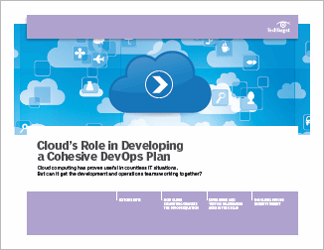Access your Pro+ Content below.
How to implement DevOps in AWS


Sponsored by TechTarget Search AWS
Implementing DevOps in AWS is serious work, but it might not be the daunting task it seems. AWS supports DevOps efforts by providing services to build, store and deploy applications. DevOps features are accessible in AWS, continuous integration and continuous delivery chief among them.
There are many tools available in AWS that can help with DevOps, including CodeDeploy, CodePipeline and CodeCommit. There is also Amazon CloudWatch, which is critical for monitoring. Most organizations should employ a proof-of-concept use of the DevOps model and the technology to demonstrate that it can be integrated with existing development, testing, deployment and operations processes. IT teams need to know whether DevOps is appropriate for their organizations, especially if they have applications in the public cloud.
Effectively employing DevOps allows a business to realize numerous efficiency-related benefits. If your organization is using AWS and you want to take advantage of DevOps, it is important to know the best ways to do so. This handbook provides guidance to IT pros looking for a place to start and identifies some of the many third-party tools available for tasks such as stack provisioning, test automation, configuration management and system monitoring.
Table Of Contents
- What you need to know before deploying DevOps
- Take time for DevOps transition
- Third-party tools can make a difference
-
E-Handbook
Boost continuous delivery by developing a unified cloud and DevOps model
Download -
E-Handbook
Survive and thrive in cloud DevOps
Download -
E-Handbook
Watch online: Effective approaches to AWS cloud monitoring
Download -
E-Handbook
Optimize your service with AWS performance monitoring
Download




